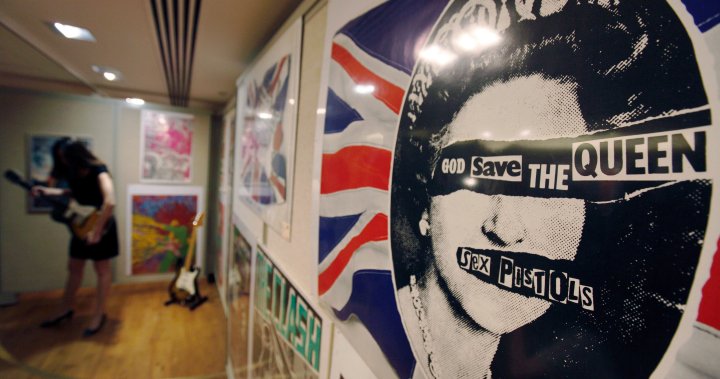On warm summer nights, the park across the street from my house is filled with people playing dribbling soccer balls, playing volleyball, or engaging in aggressive games of Spikeball.
Nearly all of them will have music playing through Bluetooth speakers, usually from the Spotify Top 100. And if I’m honest, none of this music is any good. All I hear is mumbled lyrics tunelessly rendered (well, except for the overuse of Auto-Tune) and beats so quantized that they could be substituted for an atomic clock.
I just re-read that last sentence. Harsh stuff from someone who doesn’t understand the music of today’s yoof? Or am I scratching the surface of a problem facing the recorded music industry?
Consider the following:
- Kate Bush’s 1985 song Running Up That Hill hit number one on the U.K. singles charts and has reached the top five in other countries around the world. Hounds of Love, the album which spawned the hit, peaked at #8 on the Canadian charts earlier this summer.
- Metallica’s 1986 track Master of Puppets has been given such a boost by its appearance in Stranger Things that it’s currently in the U.S. Top 40. This eight-minute metal song is competing for attention with the latest from Lizzo, Beyonce, Justin Bieber, and Cardi B.
- Fleetwood Mac’s 1977 album Rumours is one of the top-selling albums of the year so far. It’s number nine in the U.S. Rumours is also one of the top-selling vinyl albums of the year so far.
- The Sex Pistols’ God Save the Queen from 1977 is the top-selling vinyl single of 2022. Further down the list, you’ll find that the Clash’s Rock the Casbah (1982) is the eighth best-selling vinyl record.)
- This past week, Queen’s Greatest Hits (1981) just became the biggest-selling record of all time in the U.K. with seven million copies sold after more than 1,000 weeks on the British charts. Last week, it was number 24 in Canada, a couple of positions ahead of Yer Favourites, the Tragically Hip’s greatest hits collection.
Older music is certainly having a moment this summer and much of this interest is not being driven by nostalgic oldsters but by the same kids playing Spikeball across the street.
Luminate, the company that monitors music consumption for the record industry, noted in its mid-year report that “current” music (identified by the industry as material being less than 18 months old) isn’t just losing market share. It’s becoming statistically less popular among all demographic groups. Looking at the United States, the metric known as “Total Album Consumption” of “current music fell by 1.4 per cent in the first half of 2022 compared to a year ago. Meanwhile, “Catalogue” music — material more than 18 months old — is up by 14 per cent.
We can go even deeper. The market share of “Catalogue” music in America is 72 per cent so far this year with “Current” music sitting at 27.6 per cent. That’s a market share decline of three per cent.
To put it another way, “Current” music is becoming progressively less popular when measured by the number of streams and sales. Whatever is being released today just isn’t resonating with the public the way it did in the past. People are showing a growing interest in listening to older music instead.
This obviously requires some unpacking. Why isn’t “Current” music resonating? What’s with the uptick in interest for older material?
Some will point to the lack of so-called “high-impacting” new releases in 2022. If, for example, Taylor Swift or Adele had new records, these numbers might be different. But as it stands, only 102 albums have debuted in the Billboard Top 100 this year (the definition of “high-impacting”) compared with 126 last year. This might relate to calculations by Music Business Worldwide that show the 10 most popular tracks on streaming services have been listened to over one billion times less than they were over a similar period in 2019. Both point to disenchantment with what’s being offered up as new today.
But maybe, just maybe, the answer lies in artistry and creativity. In recent weeks, numerous posts have appeared featuring laments about the quality of today’s music. Here’s an example.
Others have weighed in, complaining that too many of today’s wannabe stars are simply celebrities making music with laptops. Older music recorded in old-fashioned studios with real instruments sounds richer and more interesting. Far too many songs are fast fashion: get ’em out, squeeze everything you can out of the tune, and then forget them. (One critic, pointing to how The Beatles’ Yesterday has been covered more than 3,000 times, asks how many covers there will be of Cardi B’s WAP in the future. He has a point.)
More theories: A lack of genuine storytellers in the vein of Carole King or Jackson Browne. Musicians who buy ready-made beats online and then sing/rap over top and then release the result. A desire to be famous rather than pay their dues learning their craft. (Blame all the TV talent shows for that.) Record labels that don’t nurture and develop artists, resulting in ultra-short careers consisting of one or two songs. A lack of people willing to pursue true mastery of a musical instrument with years of practice. Too much perfection in the recording process, an obsession that strips all the humanity and soul out of a song. (Compare anything from today’s top 10 to a Motown hit and the difference becomes obvious.) Formulaic songwriting (I’m looking at you, Max Martin.) Algorithms which just push more of the same.
I’m not done. Thanks to technology, many of today’s artists are having hit songs without ever playing a single live gig. That means they’ve never had to sweat it out in front of strangers over long tours. That boot camp experience is essential to becoming a better all-around musician. You need that experience if you’re not just going to compete with your heroes’ music on the world stage, but also with your heroes’ heroes’ heroes.
And there’s still more to consider. Cast your mind back to 1992. Music that was thirty years old then sounded old. Not only was modern pop music still developing, but we’d barely begun to use things like electric guitars and proper amps. Effects pedals hadn’t been invented yet nor had synthesizers. Recording studios were primitive things compared to today, capable of only producing material in mono. But then starting sometime around 1969, the sonic quality of recordings reached new levels. A song recorded in 1972 sounds every bit as good as something recorded this year. (In fact, you can make an argument that because of over-production, digital technology, and too much compression, older records sound better than what we have today.)
Now let me twist things around. This is happening because today’s young people — and remember that youth is always the driver of what’s happening in music — recognize bad music when they hear it. They’re smarter than to fall for what passes as hit music today.
Thanks to streaming and smartphones, we have access to somewhere north of 80 million songs. Within seconds, we can call up virtually any song recorded in the history of the human race. Why wouldn’t you source out the best of the best of the best?
Unlike previous generations, today’s music fans are far more ecumenical in their musical tastes. If you have a teenager, ask them to show you the last 25 songs they streamed on their phone. I’ll bet you’ll find everything from Drake to AC/DC to Matthew Wilder (specifically a song from the 1980s that became a weird TikTok phenomenon). To their credit, all they care about are good songs, irrespective of genre or era. That’s healthy.
In other words, the kids are alright. It’s the people running the star-making machinery behind the popular song that aren’t.
—
Alan Cross is a broadcaster with Q107 and 102.1 the Edge and a commentator for Global News.
Subscribe to Alan’s Ongoing History of New Music Podcast now on Apple Podcast or Google Play
© 2022 Global News, a division of Corus Entertainment Inc.



